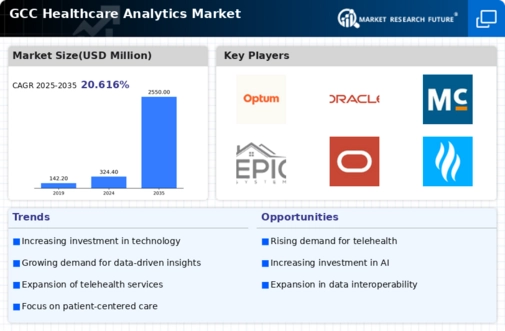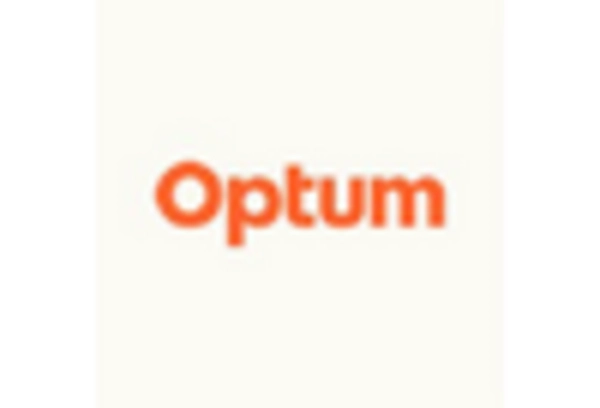The healthcare analytics market is currently characterized by a dynamic competitive landscape, driven by the increasing demand for data-driven decision-making and improved patient outcomes. Key players such as IBM (US), Optum (US), and Cerner (US) are at the forefront, each adopting distinct strategies to enhance their market positioning. IBM (US) focuses on leveraging artificial intelligence (AI) and machine learning to provide advanced analytics solutions, while Optum (US) emphasizes integrated care solutions that combine analytics with operational efficiencies. Cerner (US) is investing heavily in cloud-based solutions, aiming to streamline healthcare data management and improve interoperability across systems. Collectively, these strategies contribute to a competitive environment that is increasingly centered around innovation and technological advancement.
In terms of business tactics, companies are localizing their operations to better serve regional markets, optimizing supply chains to enhance efficiency, and forming strategic partnerships to expand their service offerings. The market appears moderately fragmented, with a mix of established players and emerging startups. This structure allows for a diverse range of solutions, although the influence of major players remains substantial, shaping industry standards and practices.
In October 2025, IBM (US) announced a partnership with a leading regional healthcare provider to implement its Watson Health platform, which aims to enhance predictive analytics capabilities in patient care. This collaboration is strategically significant as it not only expands IBM's footprint in the GCC but also demonstrates the growing trend of integrating AI into healthcare analytics, potentially leading to improved patient outcomes and operational efficiencies.
In September 2025, Optum (US) launched a new analytics tool designed to assist healthcare organizations in managing population health more effectively. This tool leverages real-time data to identify at-risk populations and tailor interventions accordingly. The introduction of this tool underscores Optum's commitment to enhancing healthcare delivery through data-driven insights, positioning the company as a leader in population health management.
In August 2025, Cerner (US) unveiled its latest cloud-based analytics solution aimed at improving interoperability among healthcare systems. This development is crucial as it addresses one of the primary challenges in healthcare analytics—data silos. By facilitating seamless data exchange, Cerner is likely to enhance its competitive edge and support healthcare providers in delivering more coordinated care.
As of November 2025, the competitive trends in the healthcare analytics market are increasingly defined by digital transformation, sustainability initiatives, and the integration of AI technologies. Strategic alliances are becoming more prevalent, as companies recognize the value of collaboration in driving innovation. Looking ahead, it is anticipated that competitive differentiation will evolve, shifting from traditional price-based competition to a focus on technological innovation, reliability in supply chains, and the ability to deliver superior patient outcomes. This transition may redefine the competitive landscape, emphasizing the importance of adaptability and forward-thinking strategies.

















Leave a Comment